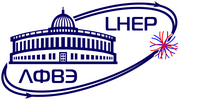Public site of the ATLAS experiment at CERN: https://atlas.cern/
ATLAS is a general-purpose particle physics experiment at the Large Hadron Collider (LHC) at CERN. It is designed to exploit the full discovery potential of the LHC, pushing the frontiers of scientific knowledge. ATLAS’ exploration uses precision measurement to seek for the answers to fundamental questions such as: What are the basic building blocks of matter? What are the fundamental forces of nature? What is dark matter made of?

ATLAS is the largest detector ever constructed for a particle collider: 44 metres long and 25 metres in diameter. Its construction pushed the limits of existing technology. The ATLAS detector at the LHC covers nearly the entire solid angle around the collision point. It consists of an inner tracking detector surrounded by a thin superconducting solenoid, electromagnetic and hadron calorimeters, and a muon spectrometer incorporating three large superconducting air-core toroidal magnets. ATLAS is designed to record the high-energy particle collisions of the LHC, which take place at a rate of over a billion interactions per second in the centre of the detector. More than 100 million sensitive electronics channels are used to record the particles produced by the collisions, which are then analyzed by ATLAS scientists.
ATLAS is a collaboration of physicists, engineers, technicians, PhD students and support staff from around the world. It is one of the largest collaborative efforts ever attempted in science, with over 5500 members and almost 3000 scientific authors. The success of ATLAS relies on the close collaboration of research teams located at CERN, and at member universities and laboratories worldwide.
NR team is among the founders of the experiment. It is remarkable that only Italy, USA, CERN and JINR have contributed to all main subsystems of the ATLAS detector – TileCal scintillator hadronic calorimeter, Muon spectrometer, Liquid Argon hadronic and electromagnetic calorimeters, Inner Detector and TDAQ. Several Laboratories of JINR were involved in these activities, the main efforts came from DLNP.
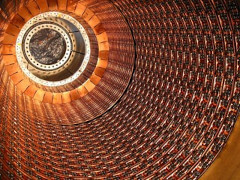
The ATLAS group at VBLHEP has contributed to the construction of the LAr hadronic calorimeter HEC (shown in the photo), radiation tests of the cold electronics and other materials at the IBR-2 reactor. At present, we are participating in the detector maintenance, data analysis within the Higgs working group and activities dedicated to the detector upgrade.
A short version of the JINR team activities in the ATLAS experiment is presented in the JINR Topical plan here.
Among the main results obtained in the recent period of work, the following can be noted:
- An important contribution was made to the implementation of the programme of the first phase of upgrading the trigger part of the electronics signal readout from a liquid argon calorimeter, including the modeling of the universal FESOC chip, the creation of a prototype signal shaper, the development of the FE crate base board and the analog part of the digital trigger board (E. Ladygin).
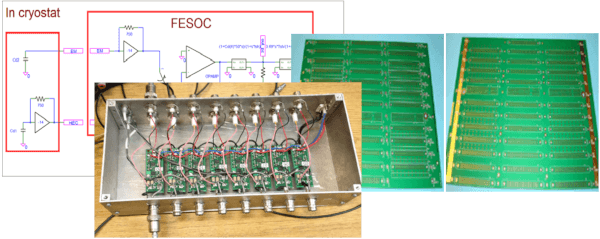
- The study of calorimetric signal degradation and hardness of HEC cold electronics was carried out by N. Javadov. Calculations have shown that for HEC we should expect a deterioration in energy resolution at an acceptable level of no more than 0.5%, and this value can be reduced using calibration algorithms. This finding allowed the ATLAS collaboration to avoid the difficult, risky and costly scenario of the cryostat opening to replace the electronics. It was also shown that degradation of the calorimeter due to radiation damage and aging will not lead to loss of physical signals. As an example, calculations of the decrease in the detection efficiency of the heavy (1 and 2 TeV) Higgs boson upon loss of the front calorimeter signal in a certain pseudorapidity region are presented. They are small.
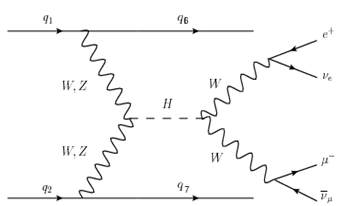
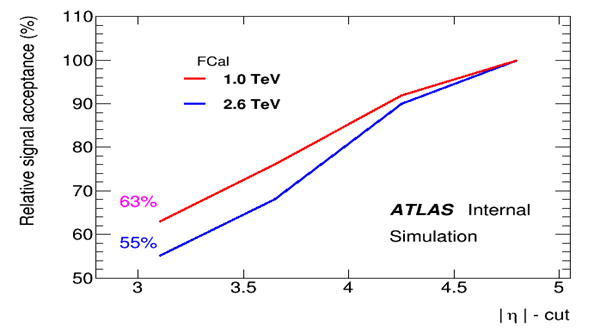
- F. Akhmadov is studying the production of the Higgs boson with decay into a pair of b-quarks, actively participating in the ATLAS working group to study the processes of associated production of the Higgs boson and the vector boson (W/Z). The discovery of the H→bb decay was the most significant result obtained in the ATLAS experiment in 2020. The figure shows the invariant mass spectrum of two b-jets after subtracting all background processes with the exception of di-bosons. The contribution from the Higgs boson is clearly visible (marked in red). The figure on the right shows the cross section for Higgs boson production in different regions of transverse momenta.
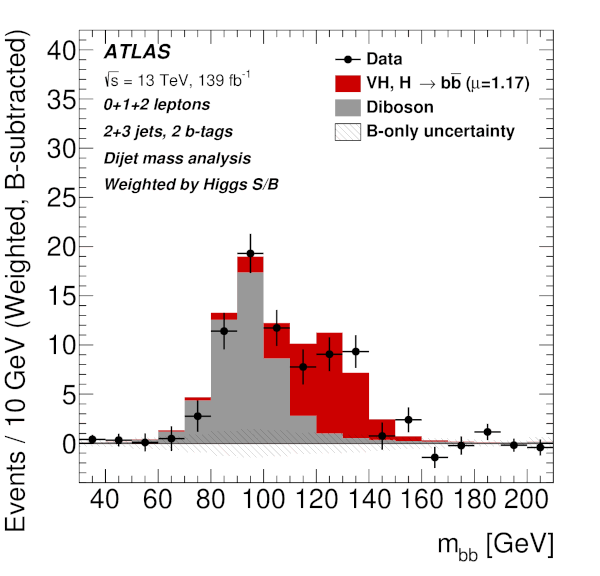
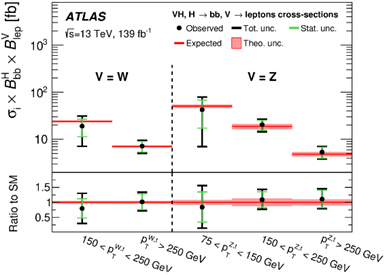
- The search for the charged Higgs boson predicted in the Minimal Supersymmetric extension of the Standard Model (MSSM) was proposed by A. Soloshenko. We are considering a process in which a charged Higgs boson decays into a chargino and a neutralino, and a complex chain of decays ultimately produces a signature of three leptons in the final state plus a noticeable amount of missing energy. The Feynman diagram of this process is shown in the figure. The details of the upcoming analysis are being worked out.
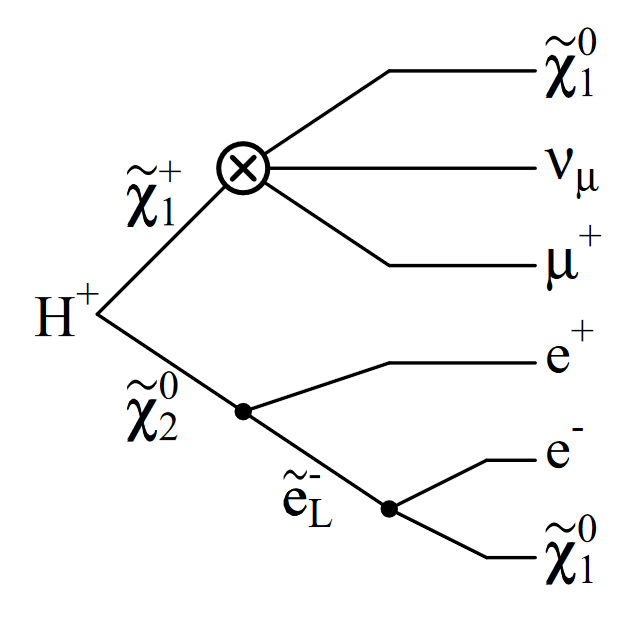
- The VBLHEP group is taking part in the second phase of upgrading the detector to operate the facility under increased occupancy due to the 5-7 times increased luminosity of the HL-LHC. In 2019, JINR signed several MoUs on the Institute’s participation in Phase 2 of the ATLAS detector upgrade programme. The participants in this work at VBLHEP will provide, in particular, high-quality fiber-optic communication for transmitting signals from the FE electronics of the liquid argon calorimeter. Together with colleagues from the Lebedev Physical Institute, a cable design was developed and long fiber optic cables and patch cords for the test stand at CERN (“EMF half crate test”) manufactured by UNICORD (Moscow) were tested. The cargo has been delivered to CERN.
